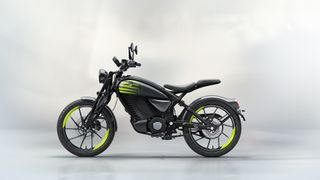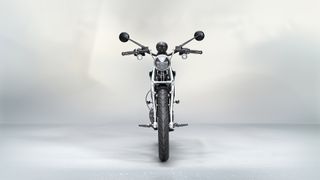Royal Enfield has turned this classic World War II motorcycle into a next-generation electric motorcycle – and electric motorcycles could go mainstream
- Royal Enfield has created an entirely new EV sub-brand
- The bike aims for a range of 100 miles
- An urban commuter and scrambler are in the works
Royal Enfield has unveiled the ‘next chapter’ for the company with the unveiling of its dedicated EV brand Flying Flea.
With the full support of the Indian motorcycle company, a brand that has been producing two-wheeled transportation since 1901 and is on track to sell almost a million motorcycles a year, Flying Flea will represent an entire family of electric motorcycles. that offer a “city++” range.
According to Mario Alvisi, Chief Growth Officer at Royal Enfield, this equates to approximately 150 km on a single charge.
The first battery-powered bicycles will be on the market in 2026 and will be called the Flying Flea C6. It is inspired by the lightweight 125cc motorcycle that was developed to be parachuted into conflict zones during World War II.
The Flying Flea grew in popularity after the war, when the enormous demand for cheap, low-maintenance transportation peaked.
Managing director, Siddhartha Lal, says the Flying Flea brand is “going for disruption” and will produce a family of electric bikes, with the unveiling event also offering a look at a future scrambler-style S6 model.
The C6, with its single seat and sleek tank, features a number of innovative design touches, including a girder fork at the front, a compact battery pack with deep-cut cooling fins and the classic Royal Enfield crankcase cover that protects the belt-drive final drive system.
It’s based on a similar retro-futuristic style to the Maeving RM1S, only with the added glitz and shine of a company with years of experience in mass-producing motorcycles.

Speaking to Mario Alvisi after the unveiling, the Chief Growth Officer revealed that the company had developed everything in-house, from the engine to the touchscreen infotainment and the software that powers it.
This is what he believes will enable Royal Enfield to succeed in a market that is notoriously difficult for startups.
“Royal Enfield has always been accessible and Flying Flea should be the same,” he said. “Other brands tend to rush into these things and buy a lot of off-the-shelf parts. The costs add up quickly and it’s hard to make it work financially,” he added.
It helps that Royal Enfield invested €50 million in Spanish electric off-road motorcycle startup Stark in late 2022. The partnership has seen many of Stark’s lessons learned in its off-road Varg model in both the upcoming C6, the more off-road motorcycle road-oriented C6 and the upcoming Himalayan electric adventure bike.
Analysis: A likely success, if the price is right

Once launched, the Flying Flea brand will compete against the likes of Maeving’s RM1S, but also against more expensive options from BMW (the CE02) and even against Kawasaki’s first attempt at an electric car in the seriously underpowered Ninja e-motor. seriously underreached. 1 model.
More recently, Can-Am has entered the market with its Pulse and Origin machines, which offer excellent technology and an engaging ride. But they are out of the reach of many thanks to their high prices.
Royal Enfield needs to ensure that the prices are right and continue its reputation in the ICE (internal combustion engine) motorcycle market as an affordable and accessible option.
If it can do this and still provide a great infotainment offering, as well as a fun and reliable ride (not to mention solid all-electric range), it could well be the first brand to enter the mass-production electric market motorcycles breaks through.
